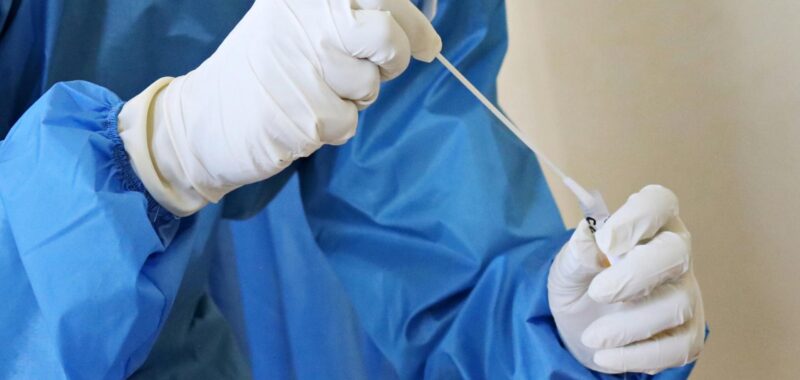As the COVID-19 pandemic continues, health authorities have emphasized the importance of self-testing to manage the spread of the virus. Self-tests, specifically lateral flow tests, offer a quick method for individuals to determine their infection status. Health organizations recommend that you order Lateral Flow tests online for convenience and regular testing, particularly if you have symptoms or have been in close contact with someone who tested positive for COVID-19.
The advice for using COVID-19 self-tests has evolved alongside our understanding of the virus. Regardless of vaccination status, it’s advised to use these tests in certain circumstances to curb transmission. If you test positive or develop symptoms, isolating to prevent further spread is critical. It’s also important to stay updated with the latest guidelines promulgated by health experts as they may change in response to new data on virus variants and community transmission rates.
Key Takeaways
- Lateral flow self-tests are a convenient tool for COVID-19 detection.
- Regular self-testing is advised, especially if exposed or symptomatic.
- Follow the latest health authority recommendations on self-testing usage.
Evolving Self-Test Recommendations
As COVID-19 continues to affect global health, self-tests have become integral to managing its spread. Your understanding of when and how to use these tests is critical.
The Role of COVID-19 Self-Tests in Public Health
Self-tests, particularly Lateral Flow tests, are a cornerstone in rapid detection of COVID-19 infections. As confirmed by health authorities such as the CDC, these tools empower you to make informed decisions regarding your health and limit potential transmission of the virus.
Best Practices for Self-Testing
When you buy Lateral Flow tests, ensure they are FDA-authorized. Always follow the manufacturer’s instructions for accurate results. To increase reliability, test if you have been exposed to the virus or exhibit symptoms. Perform serial testing, especially after a negative result when symptoms persist, to improve accuracy.
Accessibility and Distribution
You can obtain self-tests through various outlets including pharmacies and online stores. The US government has also made efforts to enhance accessibility, allowing every home to order free at-home tests starting November 20, 2023.
Interpreting and Responding to Results
After taking a self-test, interpret the results as instructed. A positive result means you likely have COVID-19, and you should follow the CDC’s isolation guidance. For negatives, remain vigilant, especially if symptoms exist, and consider retesting.
Future Trends in COVID-19 Testing
Expect advancements in COVID-19 testing, such as improved accuracy and faster results. Monitoring changes in CDC guidance is essential, as recommendations evolve with the pandemic’s trajectory and scientific discoveries.
Regulatory and Technical Insights
In navigating the landscape of COVID-19 self-tests, it’s crucial to understand the evolving guidelines from health authorities, the quality differentials between at-home and lab tests, the regulatory frameworks ensuring their efficacy and safety, and the ongoing efforts to ensure equitable access.
FDA and CDC Guidelines
The FDA recommends that when you use an at-home COVID-19 test, such as lateral flow or antigen tests, follow the instructions carefully to ensure accuracy. If your test is positive, you should isolate and inform your healthcare provider, especially if severe symptoms develop. In line with CDC guidance, if you test positive, plan to stay home for at least 5 days and wear a high-quality mask if you must be around others.
Standards and Quality of At-Home versus Laboratory Tests
At-home tests, like rapid antigen or lateral flow tests, offer convenience, though they may have a lower sensitivity compared to laboratory-based PCR tests. According to the National Institutes of Health, you should consider the disease’s prevalence in your area and any recent exposure when interpreting results. A negative result from an at-home test, especially if symptoms are present, should be supplemented with a follow-up PCR test.
Certifications and Oversight Mechanisms
Self-tests available on the market are regulated under the Clinical Laboratory Improvement Amendments (CLIA). Products like nucleic acid amplification tests and antigen tests that are approved for home use typically carry a certificate of waiver, meaning they have met certain standards set by the federal government for ease of use and lower risk of error.
Challenges and Solutions for Health Equity
Barriers to access, such as cost and availability, can limit the use of self-tests among underserved populations. The American Public Health Association stresses the importance of federal and public health efforts to distribute these tests equitably, and recommends educational interventions to ensure all demographic groups understand how to use the tests properly. Health equity demands not just access, but also the tailored distribution of clear and accurate information.
Conclusion
Adhering to the evolving guidance of health authorities ensures that you are using COVID-19 self-tests effectively. As of the latest updates, mask usage is still recommended by the WHO in specific situations, and self-quarantine has been adapted by the CDC to emphasize mask-wearing and testing rather than strict isolation for those exposed. It’s crucial for you to stay informed and compliant with local health recommendations to mitigate the spread of COVID-19.

